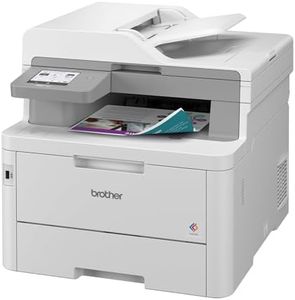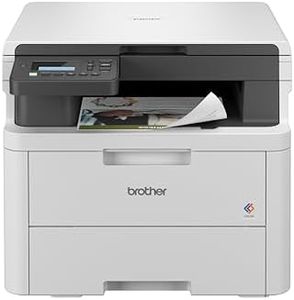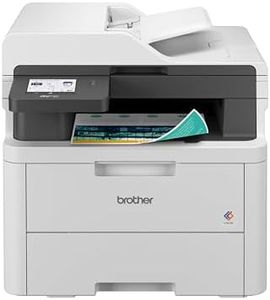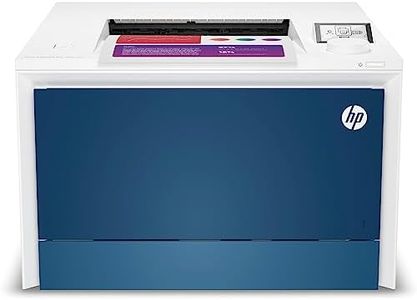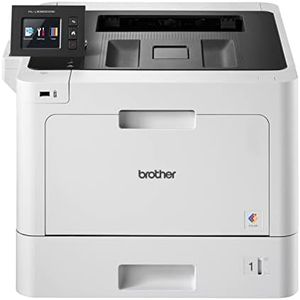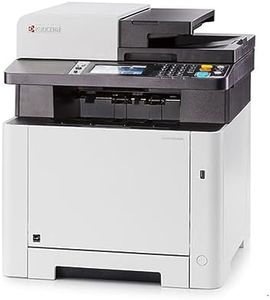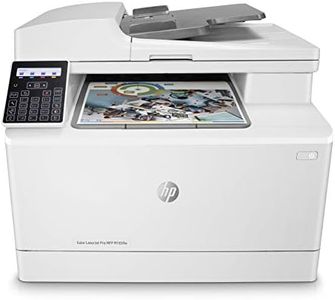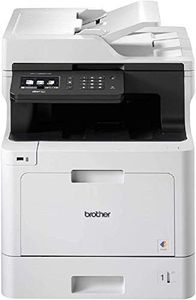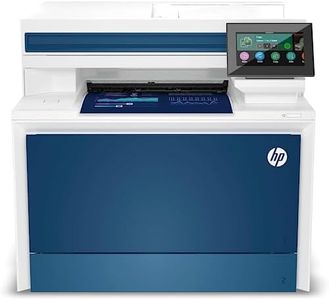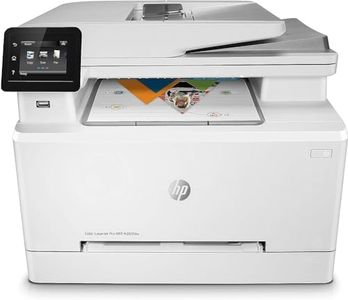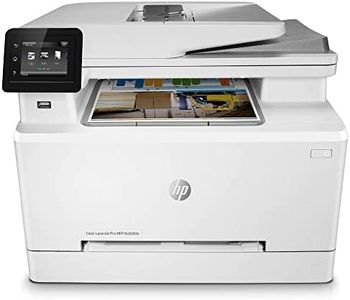We Use CookiesWe use cookies to enhance the security, performance,
functionality and for analytical and promotional activities. By continuing to browse this site you
are agreeing to our privacy policy
10 Best Colour Laser Printer
From leading brands and best sellers available on the web.Buying Guide for the Best Colour Laser Printer
Choosing a colour laser printer can make a big difference in your home or office productivity. Start by thinking about how much you print, what you print, and how important things like print quality and speed are to you. Different printers are designed for different needs—some are better for high-quality graphics and photos, while others are built for fast, high-volume text documents. Understanding the key specs will help you match a printer to your daily tasks and avoid frustration down the line.Print Speed (Pages Per Minute - PPM)Print speed tells you how many pages a printer can produce in one minute. It matters if you often print large documents or need things done quickly. Home users who occasionally print don't need a high speed, with basic models offering around 10-20 ppm. For shared offices or frequent use, aim for 20-40 ppm to avoid waiting around. If you run a busy office, you may need 40 ppm or more. Think about how much you print and whether speed really matters, since faster printers usually cost more and are best for higher volume needs.
Print ResolutionPrint resolution, measured in dots per inch (DPI), affects how sharp and clear your prints look. If you mainly print text, a standard resolution around 600 x 600 DPI is usually enough. For graphics, charts, or images where detail matters, look for higher resolutions like 1200 x 1200 DPI or above. Choose a higher resolution if you want crisp colors and sharp images, but if you print mostly plain documents, basic resolution will do the job and might save on toner costs.
Monthly Duty CycleThe monthly duty cycle is the maximum number of pages a printer is designed to handle in a month. This spec is crucial if you print a lot. For light home use, a duty cycle up to 1,000 pages is fine. Small offices should look for 2,000 to 10,000 pages, and busy offices may need even more. Pick a printer with a duty cycle well above your expected monthly volume to avoid breakdowns and keep your device running smoothly.
Connectivity OptionsConnectivity determines how you send files to the printer. Common options are USB, Ethernet, Wi-Fi, and sometimes mobile printing features like AirPrint or Google Cloud Print. Choose USB if you only print from one computer nearby. Ethernet is good for office networks, and Wi-Fi is ideal for wireless printing from multiple devices. If you want to print from tablets or smartphones, check for mobile-friendly features. The more ways you can connect, the more flexible and convenient your printer will be.
Paper HandlingPaper handling covers the types and sizes of paper a printer can use, as well as how much it can hold at once. Standard printers handle A4/Letter size and hold about 150-250 sheets, suitable for casual users. Look for larger or multi-purpose trays if you need to print envelopes, labels, or legal-size paper, or for offices that need to refill less often. Double-sided (duplex) printing is another helpful feature for saving paper and time, so consider that if you print lots of multi-page documents.
Cost of ConsumablesConsumables are things like toner cartridges and drum units that you’ll need to replace regularly. Printers vary widely in how expensive these are and how many pages they produce. Some have high-yield cartridges that print more pages before needing replacement, which is better for frequent printing. If you print a lot, pick a printer with affordable, high-capacity cartridges; if you print rarely, this might be less important. Always check typical cartridge prices and page yields to estimate ongoing costs.
Size and Noise LevelColour laser printers can be bulky and noisy, which matters if space or quiet is important to you. Compact models fit smaller spaces and may be quieter—best for home and small offices. Larger, faster printers usually take up more room and make more noise, which is fine for busy offices with their own print area. Consider where your printer will go and whether constant noise could be disruptive before choosing a size or model.
